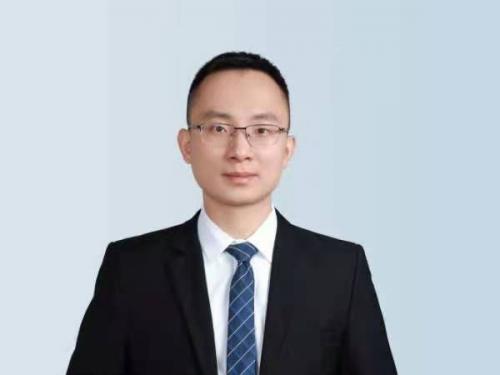Faculty
SELF-INTRODUCTION:
Dr. Jun Che completed his Ph.D. degree in UT Health San Antonio in 2015 and remained work in UTHSA from 2015 to 2020 as a postdoctoral research fellow before joining the school of medicine as a research associate professor in Sustech. He has been focusing on topics in DNA repair/recombination and DNA damage tolerance in budding yeast cells. So far, he has published 8 articles in prestigious journals such as Nature Structural & Molecular biology, the EMBO Journal, PLoS Genetics, Microbial Cell et al.
EDUCATION:
2008-2015 Ph.D. UT Health San Antonio USA
2004-2007 Master Kunming Institute of Zoology, Chinese Academy of sciences
2000-2004 Bachelor of Engineering Xi’an Jiaotong University, China
WORKING EXPERIENCE:
12/2020- Research Associate Professor, Southern University of Science and Technology
08/2015-10/2020 Post-doctoral fellow, UT Health San Antonio, USA
01/2008-07/2008 Project manager, Beijing Genome institute
HONORS AND AWARDS:
2nd place in oral presentation in 2019 department retreat
Best poster presentation at NCI T32 and CPRIT Joint Annual Retreat June 2013
CPRIT predocteral fellowship 2011,2012
XJTU Campus Scholarship 2000, 2001, 2002, 2003;
Research:
From prokaryotic to eukaryotic, DNA lesions occur frequenctly in every single cell everyday ( ~1 lesion/ 10kb DNA). Although a large portion of lesions can be eliminated by several sophisticated DNA repair pathways, unrepaired DNA lesions can severely interfere with DNA templated processes, such as DNA replication and transcription. During DNA replication, a cell can temporarily bypass these DNA lesions instead of removing them, thus ensuring the completion of DNA replication in time. This process is called DNA damage tolerance (DDT), a major mechanism for generating mutations and chromosomal rearrangements. Thus, this process is related to many areas of biomedical research.
DDT contains two pathways: transleion synthesis (TLS) and template switching (TS). Although DDT has been studied for nearly a half century, many important questions remain unanswered. For example, how are TLS and TS chosen by cells? When does TLS/TS take place, right at stalled replication fork or behind replication fork in a post-replicative manner? How does polyubiquitination (K63-linkaged) of PCNA K164 promotes TS ?
I have been studying these questions in the model organism Saccharomyces cerevisiae for several years and have made significant progress recently. I have developed a few unique genetic and molecular tools as well as discovered new genes and regulatory mechanisms in the DDT process, which lies an important foundation for answering the above-mentioned problems in the field. The study in this field is critical for helping understanding tumorigenesis, aging,drug resistance and new drug design in the future.
MANUSCRIPT REVIEWER AND EDITOR:
Metabolic Brain Disease(reviewer)
PUBLICATIONS:
1 Li X, McConnell K, Che J, Ha C, Lee SE, Kirby N, Shim EY. DNA Dosimeter Measurement of Relative Biological Effectiveness for 160 kVp and 6 MV X Rays. Radiat Res 2020 Aug 1;194(2):173-179.
2 Lee K, Ji JH, Yoon K, Che J, Seol JH, Lee SE, Shim EY. Microhomology Selection for Microhomology Mediated End Joining in Saccharomyces cerevisiae. Genes (Basel). 2019 Apr 8;10(4).
3 Li F, Wang Q, Seol JH, Che J, Lu X, Shim EY, Lee SE, Niu H. Apn2 resolves blocked 3' ends and suppresses Top1-induced mutagenesis at genomic rNMP sites. Nat Struct Mol Biol. 2019 Mar; 26 (3):155-163.
4 Klein HL, Ba?inskaja G, Che J, Cheblal A, et al, Guidelines for DNA recombination and repair studies: Cellular assays of DNA repair pathways. Microb Cell. 2019 Jan 7;6(1):1-64.
5 Jun Che, Stephanie Smith, Yoo Jung Kim, Eun Yong Shim, Kyungjae Myung & Sang Eun Lee. Hyper-acetylation of Histone H3 K56 limits break-induced replication by inhibiting extensive repair synthesis. PLoS Genetics 2015 Feb 23;11(2):e1004990.
6 Sung S, Li F, Park YB Kim JS, Kim AK, Song OK, Kim J, Che J, Lee SE, Cho Y. DNA end recognition by the Mre11 nuclease dimer: insights into resection and repair of damaged DNA EMBO J. 2014 Aug 8. pii: e201488299. [Epub ahead of print]
7 Niu AL, Wang YQ, Zhang H, Liao CH, Wang JK, Zhang R, Che J, Su B. Rapid evolution and copy number variation of primate RHOXF2, an X-linked homeobox gene involved in male reproduction and possibly brain function. BMC Evolutionary Biology 2011, 11:298
8 Che J, Wang J, Su W, Ye J, Wang Y, Nie W, Yang F, Construction, characterization and FISH mapping of a bacterial artificial chromosome library of Chinese pangolin (Manis pentadactyla). Cytogenet Genome Res, 2008. 122(1): p. 55-60.



